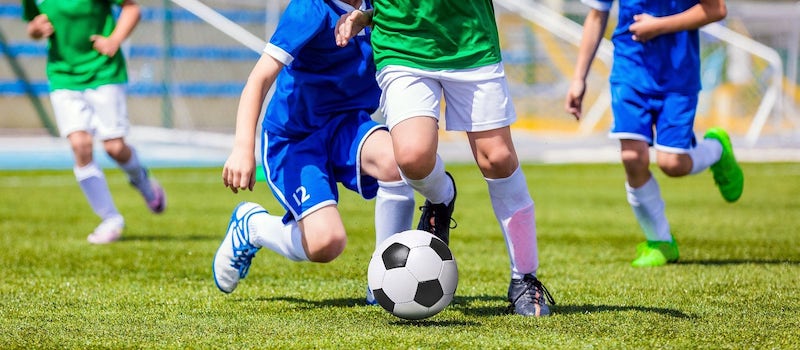All of us are yearning to return to the safe, normal regularly scheduled programming that was our lives before COVID-19 hit. The sad truth, however, is that we may not get a return to the “normal” that we remember any time soon, so it is crucial that we make the requisite adjustments as we build a path towards a better, brighter future.
Outdoor soccer is an activity beloved by many: kids play it, adults play it, and it’s proven to be an enduring form of outdoor escape for those with a competitive streak who want to stay in shape. That said, the COVID-19 pandemic has thrown all of our outdoor activities for a proverbial loop. The question then becomes, how do youth soccer players in California, where large gatherings are still prohibited, safely play their favorite game whilst social distancing?
Soccer Training Sessions Only
As of August, California had limited its outdoor youth sports activities to training sessions only, meaning games are still not happening, as of October 2020. A recent California News release stated that they believe athletic tournaments have the potential to be high-risk events due to the sheer volume of players, coaches, and spectators coming into close physical proximity with each other. With that in mind, players are now being asked to maintain the standard distance of six feet between players before, during, and after game play (when it starts back up). Obviously, preseason training is an essential part of the process, but so is saving lives and preventing the spread of sickness.
Soccer Outdoor Conditioning
At this point, we know that COVID-19 is primarily spread in packed indoor interiors, and that it is definitively more difficult (but not impossible) to contract in an outdoor environment. This means that gyms and other indoor athletic facilities remain closed, but parks are, pun intended, fair play for the moment. That said, while you’re running drills and doing the required exercises to get yourself amped for the game, it is imperative that you respect the space of those around you, maintaining a six-foot distance at all times.
Soccer Masks
It has become apparent that N-95 masks are one of the essential factors when it comes to the spread of COVID-19. Obviously, an N-95 mask might be inconvenient or difficult to wear during practice. Thankfully, there are a number of comfortable, breathable protective masks that are designed exclusively for those who are more prone to outdoor athletic exertion. Not wearing a mask is a gamble even if you keep your distance from strangers, but a mask – particularly one that’s been engineered for athletes – is a surefire way of reducing your risk of contracting COVID.
Getting to the game… when the game happens!
Since soccer games are more or less on pause until further notice, it is of the utmost importance that young players and their parents take every conceivable precaution throughout every stage of preparation. That means players waiting in their car before warm-ups, since hanging out in close quarters, even outdoors, could intensify the risk of COVID infection.
It has also been suggested that youth teams should only compete with other teams in their immediate, local area, since travel brings with it the further risk of infection. All players, and their parents, should also be getting tested on a regular, perhaps even weekly basis, both for their own health, and for the peace of mind of their teammates. If you want to go the extra mile in terms of ensuring your friends’ safety, feel free to self-quarantine a few days before the game.
So, in short, here are the things you can do if you’re a youth soccer player (or a youth soccer player’s parent) looking to get back to your favorite pastime, and do it safely:
- Maintain standard social distancing practices.
- Reduce any extraneous interactions with other players or coaches.
- Do not travel to any unfamiliar towns or neighborhoods to play with other teams.
- Wear a mask, when you can.
Thanks for reading!
Share on:






























